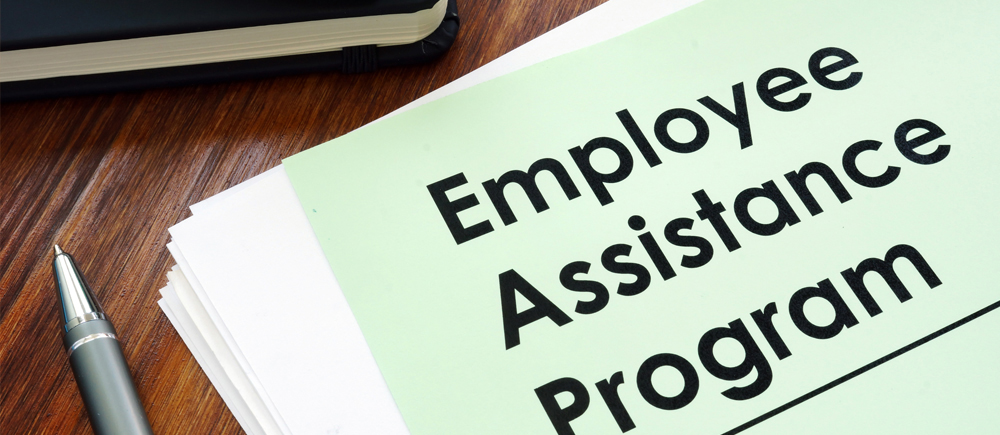By Lindsay Byrka, Vice President, Immix Group: An Employee Benefits Company
You may be familiar with the acronyms “EAP” or even “EFAP.” Perhaps you have a general or at least vague idea about these plans. But, like many people, you’re not exactly sure what they mean or how they work. Lacking a solid understanding, you aren’t sure if providing an EAP or EFAP would hold true value for your team.
Whether you’re an HR professional, a program’s plan administrator or an employee who is a member of a benefits program, it’s to your advantage to know about EAPs. In this article we will try to answer the most common questions about them.
Firstly, EAP stands for Employee Assistance Program. Lately providers have started referring to it as EFAP, for Employee and Family Assistance Program. For the sake of simplicity, we’ll use EAP here.
EAPs originated in the 1970s. They developed out of programs that assisted employees with alcohol problems. The first EAPs included mental health and family problems, keeping addiction still as a central tenet. Today, the scope of these programs is vast, with mental wellness as their guiding principle.
The purpose of these programs is to provide access to support and resolution for problems that are affecting work. However, such problems don’t necessarily have to stem from the workplace. In fact, it’s just as likely that they don’t.
What services does an EAP include?
An EAP covers voluntary, free and confidential assessments, short-term counselling (via online, telephone or limited in-person contact), referrals and follow-up services.
The personal and work-related problems may include (but are not absolutely limited to):
- interpersonal relationship problems
- parenting issues
- eldercare issues
- drug and alcohol/addiction issues
- financial concerns such as debt management
- basic legal assistance
- general anxiety, stress and coping skills
- grief and bereavement
- weight management and nutrition
- critical-incidence response.
Taking it further, most major EAP providers also offer organization wellness initiatives. While these services are typically included in more robust, stand-alone plans (as opposed to the type of EAP embedded within an extended health-care offering), the services can often still be accessed if required, for a fee.
For companies with comprehensive programs, the organization wellness programs provide education, motivation and intervention in various areas, including:
- managing workplace bullying
- employee diversity training
- harassment prevention
- stigma reduction strategies
- crisis management
- effective communication strategies
- workplace issues interventions
- customized coaching and assessment
- disability prevention, including trauma/depression/anxiety/addiction care
- onsite workplace trauma response and follow-up support, e.g., for post-traumatic stress disorder (PTSD).
Most providers are available 24-7, 365 days per year, in a variety of languages, and can give support via a multitude of media.
How does an EAP work? Is it really confidential?
Plan members are often concerned about privacy. According to the most recent study by the global healthcare leader Sanofli, only 65% of employees are confident their privacy will be protected. Their fears are understandable – but don’t reflect reality. Being key to the success of these programs, confidentiality is respected and staunchly upheld.
Generally speaking, the providers of EAPs are barred from reporting any details to employer or benefits advisors. They may share a limited amount of aggregate data to assess the usage of the program. But confidentiality as to who specifically is using the plan, and for what issues, is maintained as paramount to the process.
In fact, a lot of the time assistance can be accessed without providing full details as to the identity of the person accessing the service. A simple policy number is often enough.
How much does an EAP cost?
The good news is that many insurance carriers include employee assistance programs as an embedded plan feature within the extended health benefit.
Typically, the embedded programs are more limited in scope than a stand-alone program. However, as mentioned earlier, for very reasonable fees you can often purchase one-off services when the need arises. And typically an hourly rate would apply, varying based on the specialist you required.
For a stand-alone plan, the cost tends to be charged as a fee per certificate (meaning, covering the employee and all their dependents) per month. The costs range from around $3-$6 per employee, per month. That’s just $36-$72 per employee per year!
It’s worth noting that, according to industry information on EAPs’ return on investment, for every $1 put into EAPs, the return is eight times over.
The bottom line? This is quite simply a very affordable and valued benefit.
Can you expand on the benefit of offering an EAP to employees?
The goal of an EAP is to help employees to get better, and/or to address the problems that are preventing them from doing their best work.
Even large organizations with specialized staff do not have everyone in-house to adequately address the unique situations that may arise in the course of life and business. At an organizational level, implementing an EAP or expanding your program means being prepared to engage specialized professionals when needed. For the employee, this means having the right person for the problem, right at their fingertips.
The benefits are limitless when it comes to the person’s personal well-being. When we’re talking specifically about the impact as it relates to work, here are a few specific goals:
- improved productivity – distraction by personal problems has a major impact on job performance
- reduce absenteeism
- reduce healthcare costs/gradually see lower usage of the plan
- prevent escalation of issue involved.
There is a very obvious trickledown effect. Improved employee wellness fosters a positive work environment, which helps to retain employees. The fact is: People stay at jobs because of good relationships with their managers and coworkers.
By assisting your team in achieving personal well-being, you’re positively impacting everyone.
Why should I implement this for my employees? Can’t they get help on their own?
Even the best-equipped among us often find ourselves without a clear path or answers to our quandaries. For many, an EAP may be the only thing available to help. Not implementing an EAP assumes employees have their own resources, networks and the knowledge to seek out appropriate care and guidance for either crisis or non-crisis situations that may arise in their lives.
We have a plan. Now what?
Awareness is key. Unfortunately, awareness when it comes to benefits is statistically low. Study after study tells us that there is a low level of awareness on the part of both benefit plan administrators and employees with regard to the benefits available to them – and how these benefits actually work.
Even when efforts are made to communicate the details of benefits programs, there is a disconnect. Over 90% of the time, employers report thinking communication was “good or very good.” Unfortunately, most employees totally disagree (Sanofi study).
So, what can an employer do? Here are some suggestions:
- Heighten awareness: constant reminders are needed, in a variety of formats
- Be clear about the scope of the areas the program addresses
- Be clear about the many ways to access it – even better, demonstrate if possible
- Reiterate the confidentiality of the plan.
While an EAP is just part of an overall strategy to address workplace wellness, it can play an integral role in assisting employers to foster positive mental-health strategies in that workplace.
If you don’t have an EAP in place, we can help. The consultants at the Immix Group can assist you in determining a program that addresses the needs and goals of your organization – while still fitting your budget.
For more information, please feel welcome to contact me: lindsay@immixgroup.ca

Lindsay Byrka, CFP® BA, BEd
Vice President, Immix Group: An Employee Benefits Company
A Suite 450 – 888 Dunsmuir St. Vancouver V6C 3K4
O 604-688-5262



